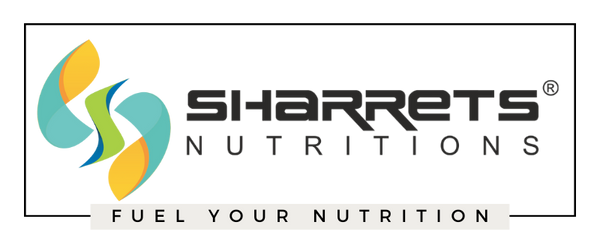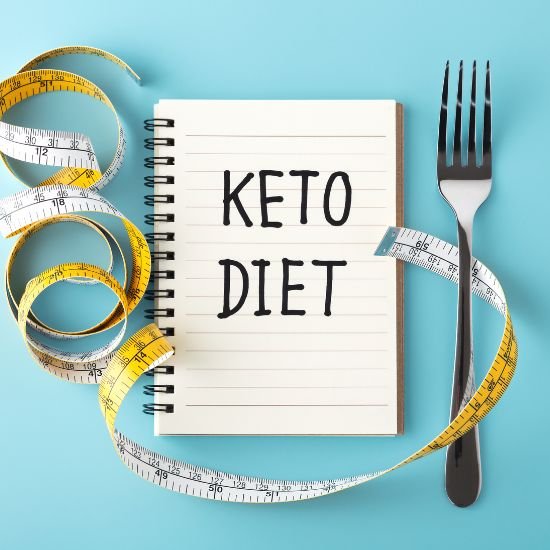
Food Grade Vegetable Glycerin Guide !
Share
Unlock the Versatility of Sharrets Food Grade Vegetable Glycerin!
The Benefits of Sharrets Nutritions Vegetable Glycerin: Your Guide to Food Grade Versatility!
Are you ready to discover a versatile ingredient that can elevate your culinary creations and enhance your wellness routine? Welcome to the world of Sharrets Nutritions Vegetable Glycerin! This incredible food-grade substance is not just a sweetener; it’s a multifunctional gem that serves a myriad of purposes in the kitchen and beyond. From adding moisture to baked goods and creating silky textures in sauces to acting as a natural preservative, vegetable glycerin is a must-have for any food enthusiast. But the benefits don't stop there! Its humectant properties also make it a popular choice in skincare, ensuring your skin stays hydrated and supple. Join us as we unlock the myriad benefits of Sharrets Nutritions Vegetable Glycerin, exploring its diverse applications and showing you how to incorporate it into your daily life for delicious results and radiant skin!
What is Sharrets Nutritions Vegetable Glycerin?
Sharrets Nutritions Vegetable Glycerin is a high-quality, food-grade glycerin derived entirely from vegetable sources, typically palm, soy, or coconut oil. It's a clear, odorless, and viscous liquid with a moderately sweet taste, making it a unique and versatile ingredient. Unlike sugar alcohols or artificial sweeteners, vegetable glycerin is a carbohydrate that is metabolized differently by the body. Sharrets Nutritions ensures its vegetable glycerin meets stringent quality standards, making it safe for consumption and various applications. Its purity and plant-based origin make it an excellent choice for vegetarians, vegans, and those with specific dietary preferences.
Culinary Uses of Vegetable Glycerin
The magic of Sharrets Nutritions Vegetable Glycerin truly shines in the kitchen. Its unique properties lend themselves to a wide array of culinary applications:
Sweetener: While not as sweet as sugar (about 60-75% the sweetness), it can be used to add a mild sweetness to beverages, desserts, and sauces.
Moisture Retention: Its humectant nature makes it fantastic for baked goods like cakes, cookies, and muffins, keeping them moist and fresh for longer.
Texture Enhancer: It can improve the texture of icings, frostings, and fondant, making them smoother and preventing crystallization. In ice creams and sorbets, it helps prevent large ice crystals from forming, resulting in a creamier product.
Solvent: Vegetable glycerin can act as a solvent for food colorings and flavorings, helping to distribute them evenly.
Preservative: It has some antimicrobial properties and can help extend the shelf life of certain food products.
Low-Carb Thickener: It can be used in small amounts to add body and thickness to low-carb sauces and dressings without significantly impacting carbohydrate content.
Cocktail Consistency: It can enhance the texture and consistency of cocktail mixes, preventing separation and improving mouthfeel.
How to Incorporate Vegetable Glycerin into Your Diet
Adding Sharrets Nutritions Vegetable Glycerin to your diet is simple:
Beverages: Stir a small amount into coffee, tea, smoothies, or homemade sodas for a touch of sweetness and body.
Baked Goods: Replace a portion of the sugar or liquid in your recipes with vegetable glycerin to enhance moisture. Start with small substitutions and adjust to your preference.
Homemade Snacks: Use it in energy bars, protein balls, or fruit leathers to bind ingredients and maintain softness.
Sauces and Dressings: Add a teaspoon to salad dressings or marinades for improved texture and a hint of sweetness.
Frozen Treats: Incorporate it into homemade ice cream or popsicle recipes for a smoother, less icy finish.
Homemade Extracts: Use it as a base for creating alcohol-free homemade extracts, such as vanilla extract, by steeping vanilla beans in glycerin.
Preserving Herbs: It can be used in small amounts to help preserve the freshness and moisture of certain herbs.
Vegetable Glycerin vs. Other Sweeteners
Here's a quick comparison:
Sugar (Sucrose): Vegetable glycerin is less sweet than sugar and has fewer calories per gram. It also has a lower glycemic index.
Honey/Maple Syrup: These natural sweeteners offer distinct flavors and additional micronutrients, whereas vegetable glycerin is flavor-neutral. They are generally higher in carbohydrates and calories.
Artificial Sweeteners (e.g., Aspartame, Sucralose): These are typically non-caloric and much sweeter than sugar. Vegetable glycerin provides some calories and has a different metabolic pathway. Some people prefer vegetable glycerin as it's derived from natural sources.
Sugar Alcohols (e.g., Erythritol, Xylitol): Like vegetable glycerin, these are often used in sugar-free products. However, some sugar alcohols can cause digestive distress in sensitive individuals. Vegetable glycerin is generally well-tolerated in moderation.
Key Differences for Vegetable Glycerin:
Dual Functionality: Beyond sweetness, its primary roles in food are often as a humectant (moisture-retainer) and texture-enhancer.
Caloric but Different Metabolism: It is caloric but metabolized differently than sugar, leading to a lower glycemic response.
Taste Profile: It has a neutral, slightly sweet taste without the aftertaste sometimes associated with artificial sweeteners.
Safety and Storage Tips for Vegetable Glycerin
Sharrets Nutritions Vegetable Glycerin is safe for consumption when used in moderation as part of a balanced diet.
Moderation is Key: Excessive consumption can lead to a laxative effect or mild digestive discomfort in some individuals.
Allergies: While rare, allergies to the source oils (palm, soy, coconut) are possible. If you have known allergies, check the specific sourcing of the vegetable glycerin if concerned.
Storage: Store your vegetable glycerin in a cool, dry place in an airtight container. It has a long shelf life and does not require refrigeration. Keep it away from direct sunlight and heat.
Common Misconceptions About Vegetable Glycerin
It's an Artificial Chemical: Food-grade vegetable glycerin is derived from natural vegetable oils through a process called hydrolysis.
It's Only for Industrial Use: While glycerin has industrial applications, food-grade vegetable glycerin is specifically purified for safe consumption and use in food products.
It's Calorie-Free: Vegetable glycerin does contain calories (approximately 4.32 calories per gram), similar to carbohydrates.
It Will Make You Gain Weight: Like any food containing calories, excessive consumption could contribute to weight gain. However, when used judiciously as a sugar substitute or texture enhancer, it can fit into a healthy eating plan.
Recipes Featuring Sharrets Nutritions Vegetable Glycerin
Here are a couple of simple ideas to get you started:
1. Super Moist Chocolate Chip Muffins:
Ingredients: Your favorite chocolate chip muffin recipe, 1-2 tablespoons of Sharrets Nutritions Vegetable Glycerin.
Instructions: Prepare your muffin batter as usual. Stir in the vegetable glycerin along with the wet ingredients. Bake as directed. Notice the improved moisture and texture!
2. Homemade Berry Smoothie:
Ingredients: 1 cup mixed berries (fresh or frozen), 1/2 banana, 1/2 cup unsweetened almond milk (or milk of choice), 1 teaspoon Sharrets Nutritions Vegetable Glycerin, a few ice cubes.
Instructions: Combine all ingredients in a blender. Blend until smooth and creamy. The vegetable glycerin will add a touch of sweetness and a smoother consistency.
3. No-Bake Energy Bites:
Ingredients: 1 cup rolled oats, 1/2 cup nut butter, 1/3 cup honey or maple syrup, 1 tablespoon Sharrets Nutritions Vegetable Glycerin, 1/4 cup shredded coconut or chocolate chips (optional).
Instructions: Mix all ingredients in a bowl until well combined. Roll into small balls. The vegetable glycerin helps bind the ingredients and keeps the bites soft. Chill for 30 minutes before serving.
4. Homemade Alcohol-Free Flavor Extracts
Concept: Use vegetable glycerin as a solvent to create your own flavor extracts without alcohol.
How to use Sharrets Nutritions Vegetable Glycerin: Submerge your flavoring agent (e.g., vanilla beans, citrus peels, mint leaves) in pure vegetable glycerin in a sealed jar. Let it steep for several weeks, shaking occasionally.
Example: Homemade Glycerin-Based Vanilla Extract. Split 2-3 vanilla beans and place them in 1 cup of Sharrets Nutritions Vegetable Glycerin. Seal and store in a dark place for at least 8 weeks.
Conclusion: Embrace the Versatility of Vegetable Glycerin
Sharrets Nutritions Vegetable Glycerin is more than just an alternative sweetener; it's a culinary chameleon and a gentle skincare ally. Its ability to enhance texture, retain moisture, and offer a mild sweetness makes it an invaluable ingredient in any health-conscious kitchen. Whether you're a seasoned baker, a smoothie enthusiast, or someone looking to explore healthier ingredient options, vegetable glycerin offers a world of possibilities. Give Sharrets Nutritions Vegetable Glycerin a try and unlock its incredible versatility for yourself !
















